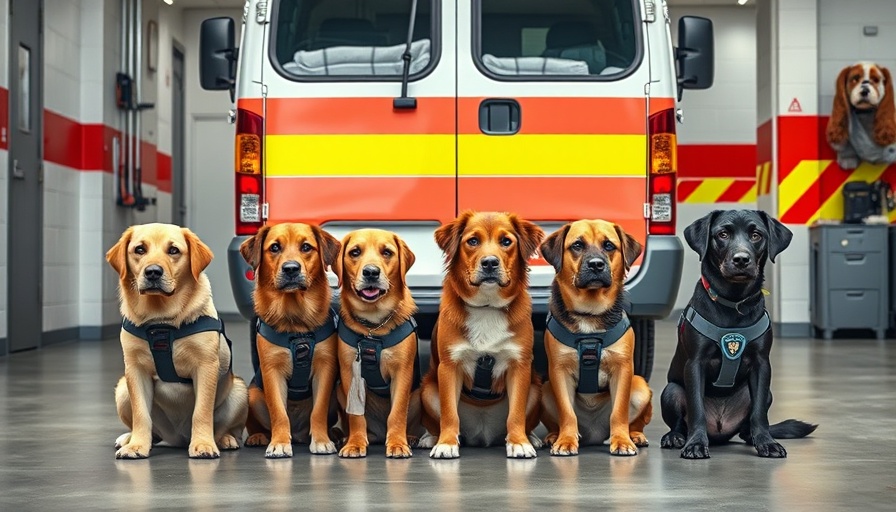
Understanding the Role of Working Dogs in Our Society
Working dogs, particularly guide and service dogs, play a pivotal role in enhancing the independence and safety of individuals with disabilities. These remarkable canines are not only adorable companions but also trained professionals that help navigate various environments, making daily tasks safer and more manageable. The focus these dogs maintain is crucial; any distractions, such as an unexpected pat from a passerby, can have life-threatening implications for their handlers.
Why Focus is Critical for Guide and Service Dogs
Guide dogs are equipped with specialized training that enables them to assist individuals with visual impairments. They perform vital functions, such as avoiding obstacles and halting at curbs, which directly impacts their handlers' safety. Even the slightest distraction could lead to catastrophic consequences. For instance, during busy commuting hours, if someone distracts a working dog, it could result in the handler inadvertently stepping into traffic. This reality underlines why it’s essential to respect the working status of these dogs.
Common Misconceptions About Interacting with Working Dogs
One of the most common misconceptions is that brief interactions with working dogs are harmless. While intentions may be well-meaning, even eye contact can lead to distractions that jeopardize the dog's concentration. Hence, it is crucial for the public to understand that pets, even a simple greeting, should be reserved for times when the dog is off-duty, marked visibly by the absence of their harness.
How to Approach Working Dogs Respectfully
If you wish to engage with a working dog, it is essential first to ask the handler for permission. This respect for boundaries ensures that the dog's focus remains undisturbed. Handlers often know their dogs' responses and can gauge if a brief interaction may be acceptable without compromising safety. However, many will decline due to the nature of the work commitment.
Educating Others on Guide Dog Etiquette
Part of supporting guide dog teams involves educating those around us about appropriate behavior when encountering a service animal. For instance, it’s important to approach with caution, avoid loud noises, and maintain a respectful distance. Organizations like Envision Blog emphasize this, highlighting the need for public awareness, especially during events like National Guide Dog Month, which raises consciousness around the etiquette surrounding these working dogs.
The Diverse Perspectives on Guide and Service Dogs
While some may see service dogs as mere companions or pets, they are, in reality, critical to their handlers' quality of life and independence. The interaction between dog and handler encapsulates a profound partnership based on trust and understanding. Acknowledging the intricate bond and the essential duties these dogs perform can foster a more respectful environment for all involved.
Practical Tips for Supporting Working Dogs
1. **Maintain a safe distance** from the handler and their dog, giving them enough space to move freely. 2. **Avoid calling out to the dog** or attempting to engage them in any way while they’re working. 3. **Respect the handler’s decision** regarding any interaction, whether it’s a hello or petting the dog, as their priority is the safety of both the dog and themselves.
By recognizing the hard work and dedication of guide dogs, we can create an environment where these remarkable animals and their handlers feel supported and respected. Next time you see a service dog at work, resist the urge to pet and admire their commitment from a distance. This small action can significantly enhance their working experience.
 Add Row
Add Row  Add
Add 




 Add Row
Add Row  Add
Add 

Write A Comment